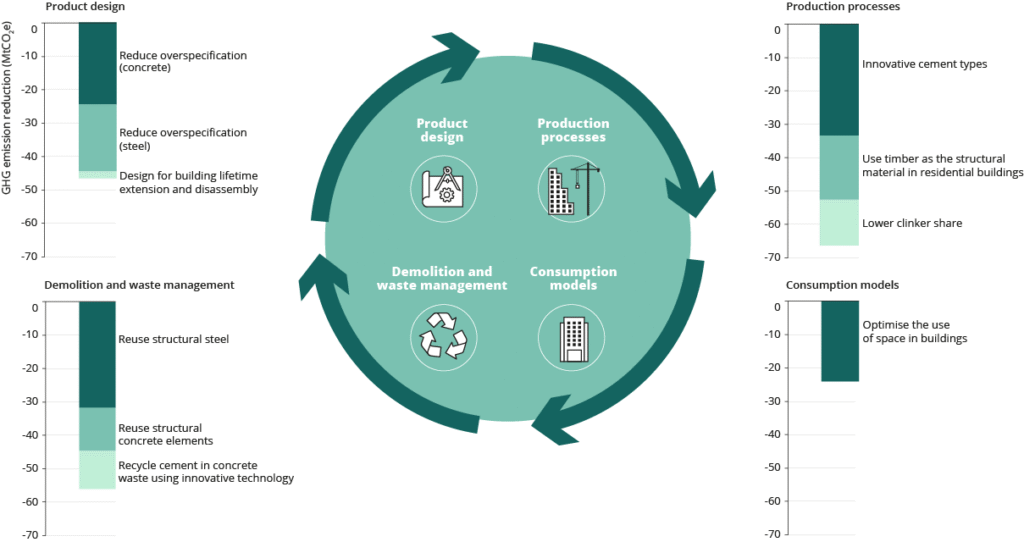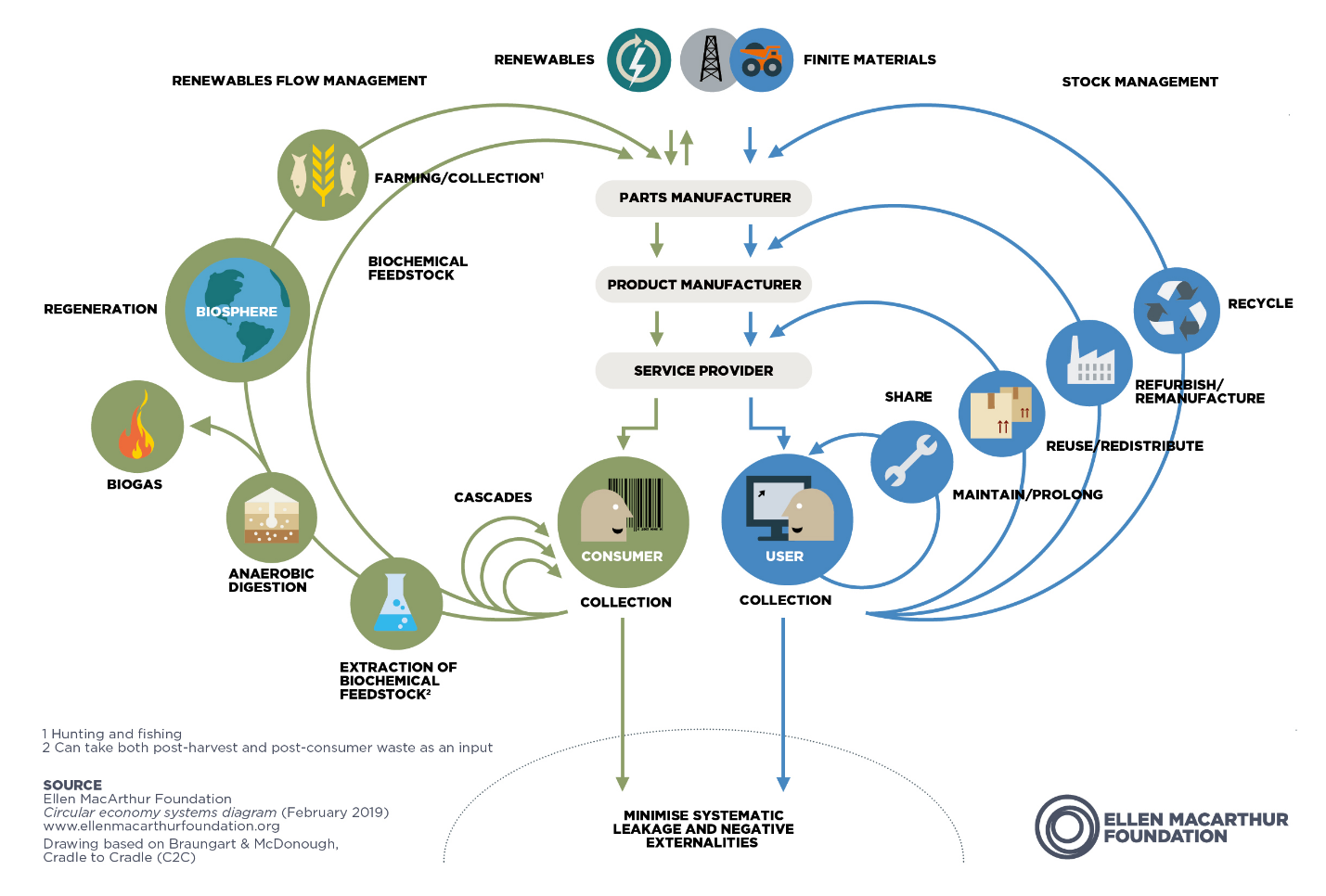How circular economy models lower greenhouse gas emissions

The world is facing an unprecedented environmental crisis, driven by the increasing levels of greenhouse gas emissions. As the global economy continues to grow, it is becoming increasingly clear that traditional linear economic models are no longer sustainable. Circular economy models offer a promising alternative, designed to reduce waste and the consumption of resources. By adopting circular economy practices, businesses and governments can significantly lower greenhouse gas emissions, mitigating the impacts of climate change. This shift towards a more regenerative and restorative economy is critical for achieving a sustainable future and reducing the environmental footprint of human activity.
- Reducing Greenhouse Gas Emissions through Circular Economy Models
-
Implementing Circular Economy Principles to Reduce Greenhouse Gas Emissions Effectively
- What role does a circular economy play in minimizing carbon emissions?
- Reducing Extraction and Production Emissions
- Promoting Sustainable Consumption Patterns
- Enhancing Waste Management and Recycling
- What role does a circular economy play in minimizing waste and lowering emissions?
- Reducing Waste through Circular Economy Practices
- Lowering Emissions through Sustainable Production and Consumption
- Encouraging Sustainable Consumption and Closed-Loop Systems
- What role does a circular economy play in reducing environmental impact?
- Reducing Waste and Pollution
- Conserving Natural Resources
- Mitigating Climate Change
-
Frequently Asked Questions
- What is a circular economy and how does it differ from a traditional linear economy?
- How do circular economy models reduce greenhouse gas emissions?
- What role do businesses play in implementing circular economy models to lower emissions?
- Can circular economy models be applied across different industries to reduce emissions?
Reducing Greenhouse Gas Emissions through Circular Economy Models
The adoption of circular economy models has emerged as a crucial strategy in the global effort to mitigate climate change by lowering greenhouse gas emissions. By designing waste out of the system and promoting the continuous use of resources, circular economy practices significantly reduce the environmental footprint associated with production, consumption, and disposal processes.
Designing Products for Longevity and Recyclability
One of the key aspects of circular economy models is the design of products for longevity and recyclability. By creating products that are durable, repairable, and recyclable, businesses can significantly reduce the demand for new raw materials, thereby decreasing the greenhouse gas emissions associated with extraction, processing, and manufacturing. For instance, companies are now designing products with modular components that can be easily replaced or upgraded, extending the product's lifespan and reducing electronic waste.
Promoting Sharing and Collaborative Consumption
The promotion of sharing and collaborative consumption is another critical element of circular economy models. By enabling multiple users to share the use of a product or service, the need for individual ownership is reduced, consequently lowering the overall demand for new products and the associated emissions. Platforms that facilitate car-sharing, bike-sharing, or tool-sharing are examples of how technology can be harnessed to promote more efficient use of resources.
Implementing Closed-Loop Production Systems
Implementing closed-loop production systems is a vital strategy within circular economy models. These systems are designed to keep resources in continuous circulation, recovering materials at the end of their service life to be reused or recycled, thereby minimizing waste and the continuous demand for virgin materials. Companies adopting closed-loop production not only reduce their reliance on raw materials but also decrease their greenhouse gas emissions.
| Circular Economy Strategy | Description | Impact on GHG Emissions |
|---|---|---|
| Design for Longevity and Recyclability | Products are designed to be durable, repairable, and recyclable. | Reduces emissions from extraction, processing, and manufacturing. |
| Sharing and Collaborative Consumption | Platforms enable shared use of products or services. | Lowers demand for new products and associated emissions. |
| Closed-Loop Production Systems | Materials are kept in continuous circulation, minimizing waste. | Decreases reliance on raw materials and associated emissions. |
Implementing Circular Economy Principles to Reduce Greenhouse Gas Emissions Effectively
What role does a circular economy play in minimizing carbon emissions?

A circular economy plays a significant role in minimizing carbon emissions by promoting the efficient use of resources, reducing waste, and encouraging the adoption of sustainable practices. This economic model is designed to be restorative and regenerative by design, aiming to keep resources in use for as long as possible, extract the maximum value from them whilst in use, and recover and regenerate products and materials at the end of their service life.
Reducing Extraction and Production Emissions
A key aspect of a circular economy is the reduction of extraction and production emissions. By designing products and services that are restorative and regenerative, businesses can significantly reduce the carbon footprint associated with extracting, processing, and manufacturing raw materials.
- Designing products for recyclability and reusability reduces the need for new raw materials, thus lowering emissions related to extraction and processing.
- Encouraging the use of recycled materials in production decreases the demand for virgin materials, further reducing emissions.
- Implementing sharing or product-as-a-service models can also reduce the overall demand for new products, thereby lowering production emissions.
Promoting Sustainable Consumption Patterns
A circular economy also plays a crucial role in promoting sustainable consumption patterns. By changing the way products are designed, produced, and consumed, it is possible to significantly reduce carbon emissions associated with consumption.
- Encouraging consumers to adopt sharing economies or product-as-a-service models can reduce the frequency of purchases and lower emissions related to production and disposal.
- Promoting the purchase of second-hand products or products made from recycled materials can decrease the demand for new, resource-intensive products.
- Educating consumers about the environmental impacts of their purchasing decisions can lead to more sustainable choices, further reducing emissions.
Enhancing Waste Management and Recycling
Effective waste management and recycling are critical components of a circular economy, playing a vital role in minimizing carbon emissions. By ensuring that materials are kept in circulation for as long as possible, the need for new raw materials is reduced, thereby lowering emissions.
- Implementing efficient recycling systems can significantly reduce the emissions associated with producing new materials.
- Composting organic waste can reduce landfill emissions and create valuable nutrients for agriculture, reducing the need for synthetic fertilizers.
- Reducing waste sent to landfills minimizes the production of methane, a potent greenhouse gas, thereby contributing to lower overall emissions.
What role does a circular economy play in minimizing waste and lowering emissions?

A circular economy plays a significant role in minimizing waste and lowering emissions by promoting the efficient use of resources, reducing the consumption of raw materials, and encouraging the recycling and reuse of products. This economic model is designed to be restorative and regenerative by design, aiming to keep resources in use for as long as possible, extract the maximum value from them whilst in use, and recover and regenerate products and materials at the end of each service life.
Reducing Waste through Circular Economy Practices
The circular economy minimizes waste by encouraging businesses and consumers to adopt practices that reduce, reuse, and recycle. This includes designing products and packaging that are recyclable, reusable, or biodegradable, and implementing waste reduction strategies throughout the supply chain.
- Adopting design for recyclability and reusability
- Implementing waste reduction and management strategies
- Promoting sharing, leasing, and product-as-a-service models
Lowering Emissions through Sustainable Production and Consumption
By promoting sustainable production and consumption patterns, a circular economy can significantly lower emissions. This involves reducing the energy required to produce goods, using renewable energy sources, and minimizing the extraction and processing of raw materials.
- Using renewable energy sources in production processes
- Implementing energy-efficient technologies and practices
- Reducing the carbon footprint of supply chains
Encouraging Sustainable Consumption and Closed-Loop Systems
A circular economy encourages sustainable consumption by promoting the sharing, leasing, and reuse of products, and by designing products that are restorative and regenerative by design. Closed-loop systems are also critical, where materials are constantly cycled back into production, reducing the need for new raw materials and minimizing waste.
- Promoting sharing and collaborative consumption models
- Developing closed-loop production systems
- Designing products for longevity and recyclability
What role does a circular economy play in reducing environmental impact?

A circular economy plays a significant role in reducing environmental impact by promoting the reuse and recycling of resources, reducing waste, and minimizing the consumption of new raw materials. This approach encourages businesses and individuals to adopt sustainable practices that reduce their ecological footprint.
Reducing Waste and Pollution
A circular economy helps reduce waste and pollution by encouraging the design of products and services that are restorative and regenerative by design. This approach involves designing products that are recyclable, reusable, and biodegradable, reducing the amount of waste generated by consumer products.
- Designing products with recyclable materials reduces the amount of waste sent to landfills
- Encouraging the sharing and reuse of products reduces the demand for new raw materials
- Implementing biodegradable materials reduces the environmental impact of product disposal
Conserving Natural Resources
A circular economy conserves natural resources by promoting the efficient use of materials and energy. This involves adopting practices such as recycling, upcycling, and reusing materials to minimize the demand for new raw materials.
- Recycling materials reduces the need for extracting, processing, and transporting raw materials
- Upcycling materials gives old products a new life, reducing waste and the demand for new materials
- Reusing materials reduces the energy required to produce new products
Mitigating Climate Change
A circular economy can help mitigate climate change by reducing greenhouse gas emissions associated with the production, transportation, and disposal of products. By adopting circular economy practices, businesses and individuals can reduce their carbon footprint and contribute to a more sustainable future.
- Reducing energy consumption through efficient production processes
- Using renewable energy sources to power production and transportation
- Designing products with minimal packaging to reduce waste and emissions
Frequently Asked Questions
What is a circular economy and how does it differ from a traditional linear economy?
A circular economy is a regenerative system where materials are kept in use for as long as possible, reducing waste and the continuous consumption of resources. Unlike a traditional linear economy, which follows a take-make-dispose approach, a circular economy promotes the reuse and recycling of materials, reducing the environmental impacts associated with extraction, processing, and waste disposal.
How do circular economy models reduce greenhouse gas emissions?
Circular economy models reduce greenhouse gas emissions by minimizing the extraction and processing of raw materials, reducing energy consumption, and decreasing waste. By designing products and services that are restorative and regenerative by design, businesses can significantly lower their carbon footprint. This approach also encourages the use of renewable energy and the adoption of sustainable practices throughout the supply chain.
What role do businesses play in implementing circular economy models to lower emissions?
Businesses play a crucial role in implementing circular economy models by redesigning their products, services, and operations to be more sustainable. This can involve adopting product-as-a-service models, using recycled materials, and designing products for recyclability and reusability. By doing so, businesses can reduce their reliance on virgin materials, lower their energy consumption, and decrease waste, ultimately leading to a reduction in greenhouse gas emissions.
Can circular economy models be applied across different industries to reduce emissions?
Yes, circular economy models can be applied across various industries, including manufacturing, agriculture, and construction, to reduce greenhouse gas emissions. By adopting circular economy principles, industries can reduce their environmental footprint, improve resource efficiency, and promote sustainable development. This approach can be tailored to suit the specific needs and challenges of different industries, enabling a more widespread reduction in emissions.

Leave a Reply